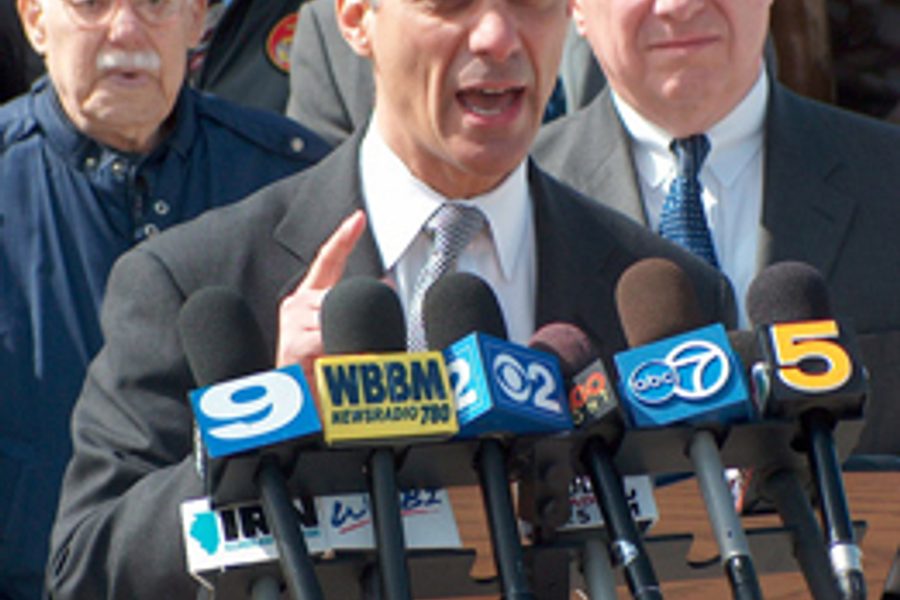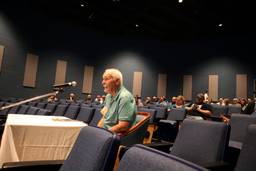
During Rahm Emanuel’s first year-plus as Chicago mayor, his office has issued a steady stream of press releases about corporations moving to downtown. Emanuel’s office says 20,000 new jobs will be created by eight major companies shifting their headquarters there and 28 more companies significantly expanding downtown operations.
But on August 19 the Chicago Tribune deflated many of Emanuel’s jobs claims with the front-page story “Mayor Emanuel’s Jobs Pipeline Somewhat Leaky.”
As the Tribune reported, in several prominent cases the shift of jobs from the suburbs to downtown Chicago actually meant serious net job cuts for the region. The paper explains:
While about 60 percent of [Emanuel’s] job pledges are for new positions, the remainder likely will be transfers — good for the city but not providing direct opportunities for the 1 in 10 Chicagoans who are out of work and looking for jobs in a soggy economy. Moreover, of the new jobs, more than 1,700 of the positions the mayor counts are construction jobs, which aren’t permanent. Of all the announced jobs, 2,200 are with companies that failed to provide a definitive date on when they would finish the hiring, and about 3,600 are on phased timetables that could stretch beyond 2015, raising the question of how firm those pledges could be.
The Tribune, In These Times and other outlets have reported the details of some of these “leaky” transfers:
- In 2011 Emanuel used between $5 and $6.5 million in TIF money to convince Sara Lee Corporation to bring the headquarters of its North American Meats company back to downtown Chicago after six years in the suburbs. But with the move, the company cut almost half of the meat division’s staff – from a total of about 1,000 at its suburban headquarters to between 500 and 650 at the new downtown location.
- In July 2012 Google Inc. announced it would move its Motorola Mobility division with 3,000 employees to Chicago from suburban Libertyville. Then in August, Motorola Mobility reported it was slashing its international payroll by 20 percent, including eliminating about 650 to 700 jobs that had been expected to move from Libertyville to Chicago. Libertyville workers said they were confused and stunned by the mixed messages, especially since just a year earlier Illinois governor Pat Quinn had offered the company $100 million in tax incentives to stay in Libertyville.
- The Tribune also featured the case of Lawson Products, which in late 2011 promised to relocate its headquarters from suburban Des Plaines to Chicago. Emanuel called it “a significant commitment to the city,” but the Tribune noted that “the move amounted to shifting the company from one side of the Tri-State Tollway to the other.” Lawson, which makes hose fittings, hydraulics and other industrial supplies, transferred about 400 employees to the new Chicago headquarters in spring 2012. But a few months later, it laid off about 100 employees, including many at the Chicago headquarters.
Nationwide, media and industry report that companies are opting to locate their headquarters downtown instead of in suburbs because of the growing popularity – especially for young professionals – of living in previously industrial or downtrodden “inner cities” now blooming with rehabbed lofts and new galleries and sidewalk cafes.
Perhaps this was part of the logic – along with about $31 million in tax increment financing (TIF) dollars from Chicago taxpayers – when United Airlines decided to move its corporate headquarters from the suburbs to Chicago’s Willis Tower (formerly Sears Tower).
But when companies like United Airlines move huge operations including many long-time employees from the suburbs to downtown, many of those employees will continue to live in the suburbs. And they likely will usually commute straight home after work, without patronizing Chicago stores or restaurants where they theoretically would stimulate more job creation. Even when these commuters do hang around after work and spend money in Chicago, in such an upscale area they will likely be spending money at high-end and chain establishments that do little to augment the fortunes of regular Chicago workers or mom-and-pop store owners.
Kari Lydersen is a Chicago-based journalist, author and assistant professor at Northwestern University, where she leads the investigative specialization at the Medill School of Journalism, Media, Integrated Marketing Communications. Her books include Mayor 1%: Rahm Emanuel and the Rise of Chicago’s 99%.








